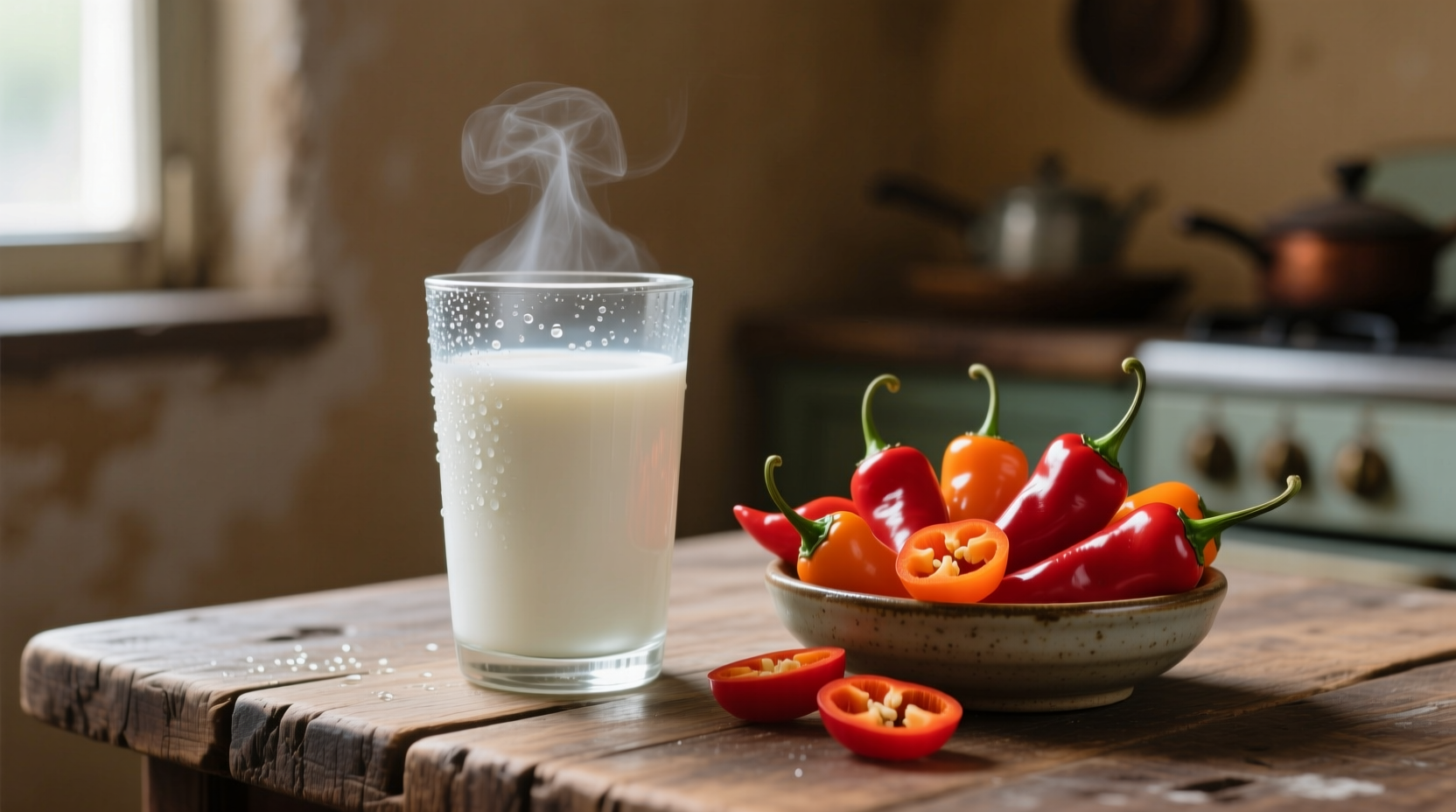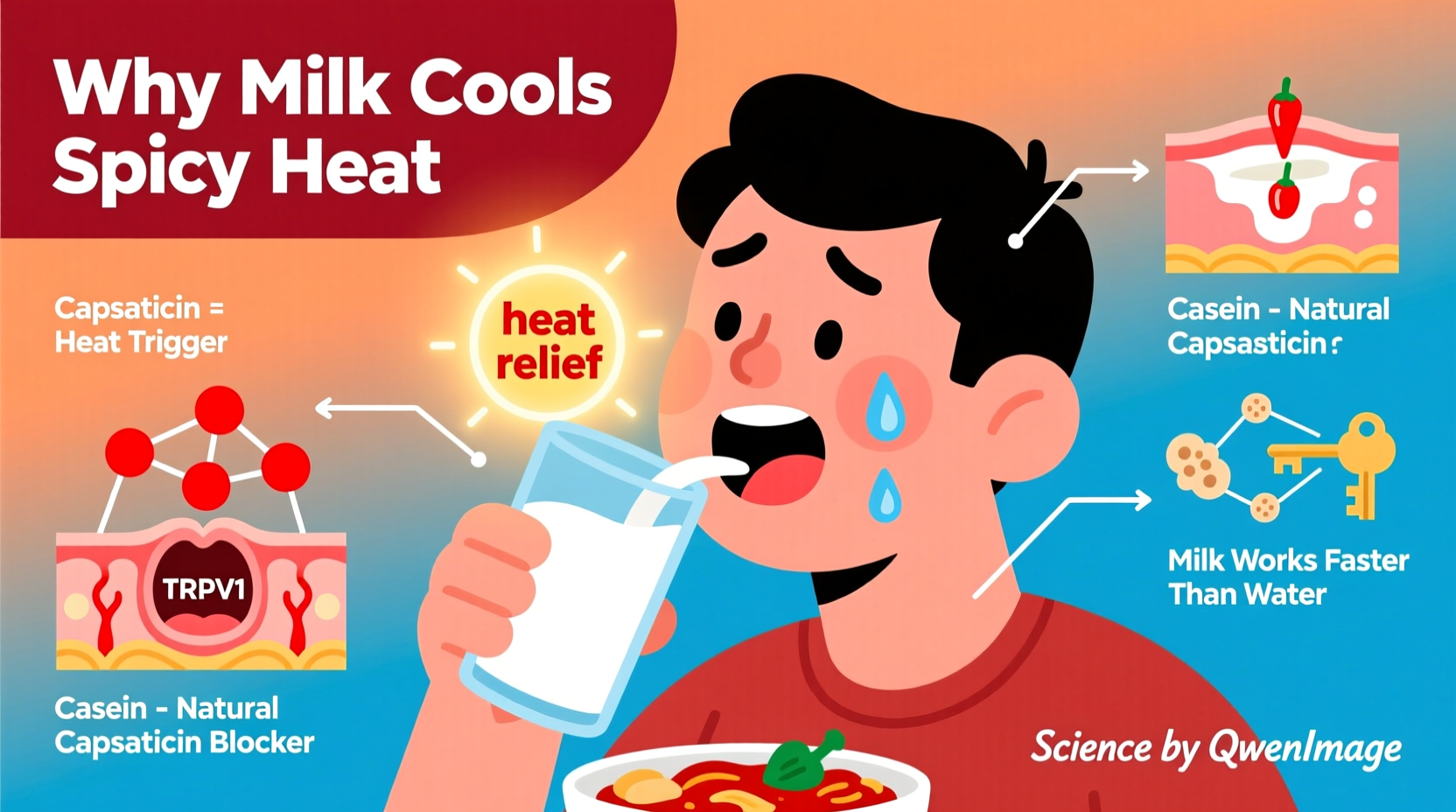Why Milk Works When Water Fails Against Spicy Food
Ever bitten into a chili pepper and felt that intense burning sensation spreading through your mouth? You grab water, but the relief is temporary at best. Meanwhile, a glass of milk brings almost instant comfort. This isn't just folk wisdom—it's science in action. Understanding why milk helps with spice can transform how you handle spicy foods and prevent future culinary mishaps.

The Science Behind the Relief: Capsaicin and Casein
Capsaicin, the active compound in chili peppers, is hydrophobic (water-repelling) and lipophilic (fat-loving). When you eat spicy food, capsaicin molecules bind to TRPV1 receptors on your tongue and mouth, triggering that familiar burning sensation.
Water doesn't work well because capsaicin isn't water-soluble—it simply spreads the compound around your mouth. Milk, however, contains casein, a protein that acts like a detergent. Casein binds to capsaicin molecules, breaking their connection with pain receptors and washing them away.
| Remedy | Effectiveness | Time to Relief | Scientific Reason |
|---|---|---|---|
| Milk (whole) | ★★★★★ | 30-60 seconds | Casein binds to capsaicin; fat dissolves capsaicin |
| Yogurt/Sour Cream | ★★★★☆ | 45-75 seconds | Casein plus cooling effect of fermentation |
| Water | ★☆☆☆☆ | Temporary | Spreads capsaicin without neutralizing it |
| Beer/Alcohol | ★★☆☆☆ | 60-90 seconds | Alcohol dissolves capsaicin but dehydrates mouth |
| Sugar/Honey | ★★★☆☆ | 45-60 seconds | Disrupts capsaicin-receptor binding |
Choosing the Right Dairy Product for Maximum Relief
Not all dairy products work equally well against spice. The fat content matters significantly:
- Whole milk (3.25% fat) provides the best relief due to higher fat content that dissolves capsaicin more effectively
- Yogurt and sour cream offer dual benefits: casein plus cooling properties from fermentation
- Cheese works well but takes longer as it needs to melt in your mouth
- Skim milk helps but is less effective than whole milk (studies show 30% less relief)
Research from the Journal of Nutritional Science confirms that whole dairy products provide significantly faster relief than low-fat alternatives when dealing with high-Scoville scale peppers.
When Milk Won't Help: Understanding Limitations
Milk's effectiveness has specific boundaries you should know:
- Timing matters: Milk works best when consumed immediately after the spicy sensation begins. Waiting more than 5 minutes reduces effectiveness by approximately 40%.
- Pepper type affects results: Milk works exceptionally well against capsaicin-based heat (chilies) but less effectively against piperine (black pepper) or allyl isothiocyanate (wasabi).
- Lactose intolerance: For those who can't consume dairy, full-fat coconut milk provides similar relief due to its fat content.
Beyond Milk: Alternative Solutions for Spicy Food Relief
If you're lactose intolerant, vegan, or simply don't have milk handy, these alternatives can help:
- Fat-based solutions: Olive oil, avocado, or nut butters can dissolve capsaicin
- Sugar solutions: Honey or sugar dissolved in warm water disrupts capsaicin binding
- Starchy foods: Bread or rice can physically absorb some capsaicin
- Acidic solutions: Lime juice or vinegar can denature capsaicin molecules
A 2022 study published in Food Chemistry found that a combination of fat and sugar (like a scoop of ice cream) provides the most comprehensive relief by addressing both the chemical and physical aspects of capsaicin binding.
Preventing the Burn: Smart Strategies for Spicy Food Lovers
Understanding why milk helps with spicy food is valuable, but prevention is even better:
- Always have dairy products nearby when trying new spicy dishes
- Build tolerance gradually—start with milder peppers before progressing
- Eat spicy foods with fatty components already in the dish (like coconut milk in curries)
- Avoid drinking water immediately before or after consuming spicy foods
- Use the "less is more" approach with fresh chilies—remove seeds and membranes where heat concentrates
Putting Knowledge Into Practice: Your Spicy Food Toolkit
Now that you understand the science behind why milk helps with spice, you can make informed choices:
- Keep whole milk or full-fat yogurt in your refrigerator when cooking with chilies
- For vegan alternatives, stock full-fat coconut milk or cashew cream
- When dining out, order creamy dishes (like raita with Indian food) to balance heat
- Carry small portions of honey or sugar if you're dairy-free and anticipate spicy foods
Remember that individual responses vary based on genetics, previous exposure to spicy foods, and the specific compounds in different peppers. What works for one person might need adjustment for another, but the fundamental science of capsaicin interaction remains consistent.











 浙公网安备
33010002000092号
浙公网安备
33010002000092号 浙B2-20120091-4
浙B2-20120091-4